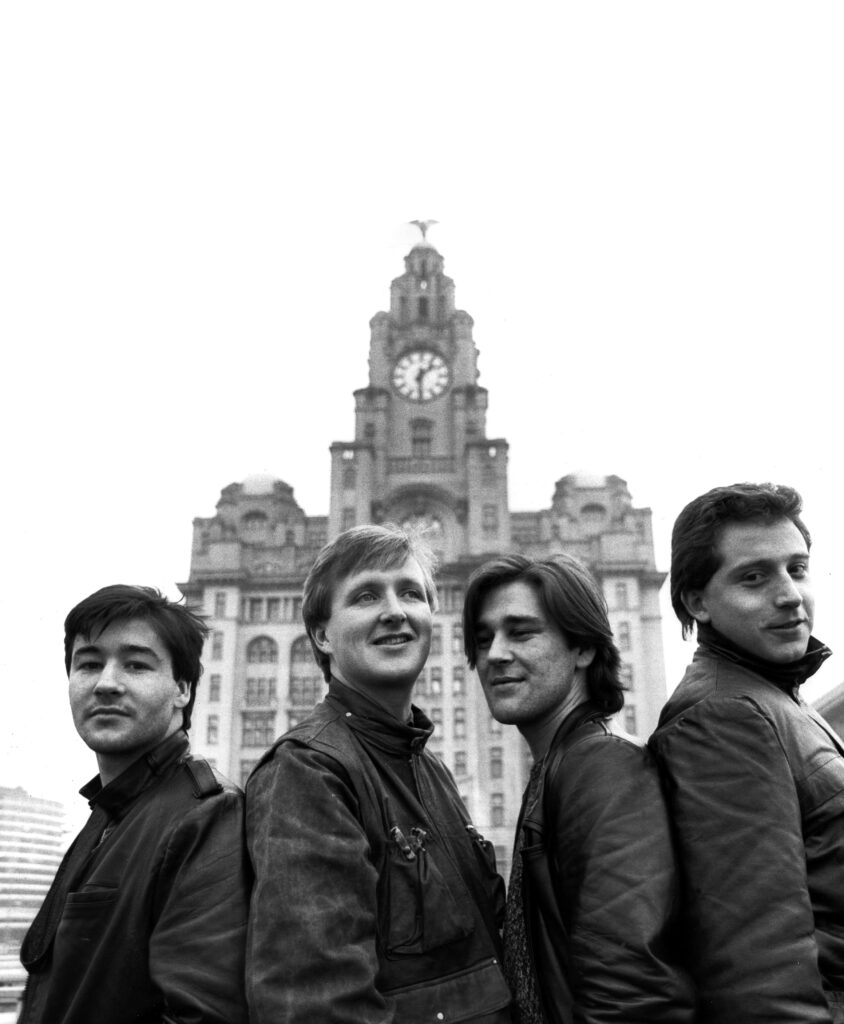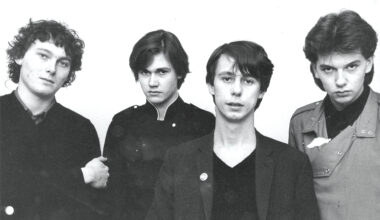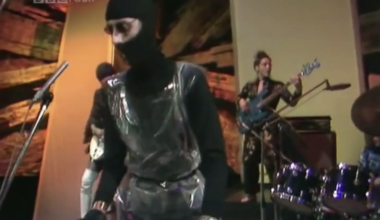China Crisis’ Gary Daly looks back on the genesis of their 1985 hit ‘Black Man Ray’, which featured the late, great Walter Becker at the controls

“Although there was a big scene exploding out of Liverpool in the late 1970s, we weren’t really a part of it. We’d been in little bands since around 77, 78 playing on street corners, in cover bands, doing working men’s clubs. We saw our friends starting punk bands and writing their own songs and we were quite envious of that, but we were more interested in early Ultravox, The Human League, Eno’s ‘Music For Films’ and ‘Another Green World’, Tangerine Dream, stuff like that.
“I wrote ‘Black Man Ray’ on my own in my mother’s house. We’d toured a lot in 1983 with Simple Minds, all over Europe and North America, and by the time we got back me and Eddie [Lundon] needed a break, so we worked on tracks independently for a while. I set up all my equipment in my mother’s house. I had a Roland Jupiter-8, a small Tascam desk and Portastudio, a Roland Chorus Echo, a Yamaha Digital Delay pedal and an 808 drum machine.
“I’d trigger the arpeggiator on the Jupiter-8 from the drum machine, which gave me a drum pattern and fairly complex bass sequences. That was the starting point of almost every song I came up with at the time. I wrote from the bass sequence up, the melody and the chords came later.
“I’d get up each morning, cycle for an hour and then settle down for a full nine or 10 hours working on a track. I had a microphone out the window to record snippets of ambient sound. It was a live feed of whatever was happening in the street below – bird song, traffic, taxis arriving, doors opening and shutting, people coming and going – which lent the song a real air of British summertime being channelled through the desk and into the music. I think that since I was working in such a solitary way that really helped.
“The intro to ‘The Highest High’, which opens our ‘Flaunt The Imperfection’ album, was a snippet of a little lad singing ‘I’m as glad to be as happy as a king’ in the street. It was originally going to be the opening to ‘Black Man Ray’, but we decided it sounded better fronting the album. That whole ‘found sound’ approach came directly from Brian Eno. He influenced my approach to writing the song’s lyric too. It’s an intuitive thing, an amalgamation of words and names. I would have been aware of Ray Charles and Man Ray’s photography. It’s a total Eno-ism, going with the first thing that pops into your head. Eddie and I grew up with that punk ethic of DIY, so we just sang whatever came into our minds and out of our mouths.
“Eno was one of the people we really wanted to produce us. We were in LA and the label were keen to know who we had in mind to record our next album. I suggested Eno and Eddie jokingly suggested Steely Dan’s producer Gary Katz. They said, ‘We can do one better, we can put you in touch with Walter Becker’.
Apparently, he already had a copy of our previous album, ‘Working With Fire And Steel’, and liked it. The thought of him listening to that album at this home in Hawaii, among the palm trees and surfboards, was fascinating to me.
“He flew over to meet us – a pair of working class kids from Kirkby in our early 20s. We weren’t the most proficient musicians, but we were pretty good songwriters. Working with him was an amazing experience. We really got on with him from the off. I was quite stoned a lot of the time, which ticked one of his boxes.
“I played Walter the four-track demo of ‘Black Man Ray’ and sang over the top of it, and he absolutely loved it. Later, while we were recording it in Parkgate Studio in East Sussex, he told me it reminded him of a Beatles song. I suppose it has that classic Beatles structure of intro, verse, chorus, middle eight, verse, double chorus, out.
“Walter’s approach in the studio was pretty rigorous. He was always in charge. He’d have us in from 10am to 10pm and he would give very specific directions. We’d usually record five or six vocals, which needed to be word perfect, take after take. Through Walter, we had an amazing team at our disposal, people like Phill Brown, who’d worked with everyone from Led Zeppelin to Jimi Hendrix.
“The high spirits of youth, vigour, verve, and fearlessness all fed into the songs on that album, balanced by the experience of these older guys from the 1970s. Walter very cleverly kept all of our parts from the demo and based his horn arrangements on our original strings. The mark of a great producer is that they keep the essence and magic of a track intact, I think.
“Audiences always love to sing along to the chorus. I think that idea of self-doubt, ‘Yes, yes, I could be wrong’, chimes with a lot of people. It probably came out of me feeling a bit tired and resentful, being on my own and just trying to do the best I can. It has an uplifting tune, but it taps into something deeper.
“It wasn’t our biggest hit, but it feels like it should have been. It was definitely one of our most successful songs. Working with Walter changed our lives forever, really. It was the single greatest thing that happened to us. His work on that that track really elevated it and I think that’s why it’s endured so well. We even gave him a band credit in the end. That was our jokey little way of saying, ‘Yeah, he’s alright. He could easily be in our little group’.”
The deluxe edition reissues of China Crisis’ first three albums are out on Caroline International





